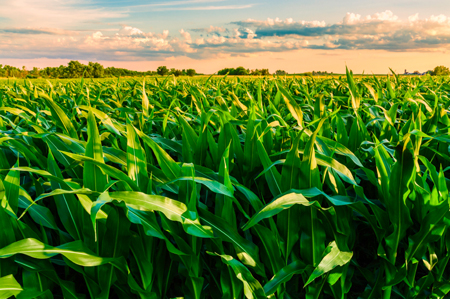 (AgWeb) – While lower commodity prices might lead some eastern Corn Belt farmers to plant soybeans instead of corn, the overall acreage mix will remain consistent with that of 2013, experts say.
(AgWeb) – While lower commodity prices might lead some eastern Corn Belt farmers to plant soybeans instead of corn, the overall acreage mix will remain consistent with that of 2013, experts say.
Here is an overview of expectations in three of the region’s states—Kentucky, Michigan and Ohio.
Kentucky
Planting in Kentucky generally begins in earnest in early April, and that is expected to happen this year assuming favorable weather and soil conditions, says Chad Lee, grain crops Extension agronomist, University of Kentucky.
“Some years, we may get as much as 100,000 acres of corn planted before April,” Lee explains. “It’s hard to imagine now given the rain/snow mix outside, but April 1 is still possible this year.”
The acreage mix for most farmers is expected to remain about the same year-over-year, he says. In 2013, USDA data show, corn acreage fell about 3% to 1.6 million acres; soybean acres increased 1% to 1.5 million; and wheat acres grew 15% to 680,000 acres.
“Many farmers are committed to crop rotation here,” Lee notes. “We may see a shift to soybeans on some land with yearly leases.”
Persistently low commodity prices heading into 2015 could result in a larger acreage shift.
“For 2014, I think most producers are willing to risk lower returns for a single year with the goals of maintaining good soil quality and managing familiar logistics,” he concludes.
Michigan
Late planting is in the forecast in Michigan, where weather has been a deciding factor.
“With the amount of snow pack still on the ground and the near complete ice-coverage on the lake, the expectation is for a late spring and consequently a later-than-normal start to spring planting in 2014,” explains Kurt Thelen, agronomist, Michigan State University.
It’s possible that corn acreage will be down slightly given lower commodity prices.
“For the most part, growers will stick to rotations,” Thelen says. “However, markets will play a small part in planting acreage determinations.”
Corn acreage declined 2% to 2.6 million acres in 2013. Meanwhile, soybean acreage grew 5% to 2.1 million and wheat acreage rose 3% to 590,000.
Ohio
In Ohio, significantly lower returns to land—a measure of gross revenue minus all costs except land—suggest more beans might be planted in 2014. Additionally, spring will be delayed by one to three weeks compared to normal because of winter weather last seen in 1993-94, says Jim Noel, The Ohio State University Extension.
Of the three major commodities, corn is expected to see returns fall most dramatically, from as little as 66% down year-over-year ($213 per acre) to as much as 96% down ($12 per acre). That’s according to Extension estimates prepared for 2014 and 2013. Ohio saw a 1% increase in corn acreage in 2013, to 3.95 million acres.
Soybean returns are projected to fall less in 2014—between 37% down year-over-year ($248 per acre) and 65% down ($62 per acre).
Wheat returns per acre will fall anywhere from 49% ($159 per acre) to as much as 81% ($25 per acre). This past year, acreage for wheat increased 21% to 630,000 acres, USDA says.




